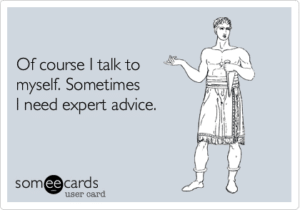Have you ever been to a restaurant that claimed to have the best pie in the world? Or run across a blog post promising the most valuable read of your life?
Maybe you’ve seen advertisements for the softest mattress, the warmest sweaters, or the fastest cars.
These claims are all examples of a type of advertisement known as puffery.
In digital advertising, puffery is all about exaggerating and stretching the truth about a product or service in a harmless way.
However, there are legal dangers associated with puffery and your brand can suffer real harm if used incorrectly.
In this article, we’ll take a look at the origins of puffery and why it’s used so frequently in sales and marketing collateral, as well as take a deeper dive into the dangers of puffery as false advertising.
We’ll also look at 4 puffery advertising examples that led to serious lawsuits and examine why puffery can damage brand reputation.
Download this post by entering your email below
What is Puffery Advertising?
The term “puffery” first originated in 1893 in an English Court of Appeals.
The case involved a manufacturer’s promise to pay customers £100 if the flu was contracted after using their product. A consumer who was not reimbursed sued the company for making false claims.
The manufacturing company claimed the advertisement was “puff” and not meant to be taken literally.
While the court ultimately disagreed with the manufacturing company, it did set a legal precedent that some advertising promises weren’t meant as serious claims, and puffery was created.
In a modern definition, puffery refers to the use of exaggeration and hyperbole, sometimes to extreme levels, to promote a product or service.
Puffery advertising examples in common marketing and sales phrases include:
- The best product for the job
- Tastes or looks the best
- Lasts longer than other brands
- Best in the world
- The last product you’ll need
- Never go back to other brands
Why Puffery Works
You may be wondering what the value of puffery is for brands.
After all, isn’t it better to promote factual statements with empirical data than make lofty claims?
While this way of thinking makes sense on the surface, puffery is often utilized in advertising for a few different reasons.
First and foremost, puffery works. Advertising slogans that use puffery and exaggerated language see high returns on investments.
Check out other benefits:
Grab the Attention of Consumers
Puffery grabs the attention of consumers and helps them make quick decisions regarding a product.
People don’t want to digest complex marketing slogans, and the quick “best product in the world” claims are a fast way to convince customers to give your brand a try.
Building Your Brand Image
Not only does puffery quickly capture your audience, but it can also help to build your brand.
A brand reputation organized around the idea of being the best or having the most appropriate solutions to common problems isn’t a bad image to have.
Is Puffery Legal in Advertising?
As mentioned above, puff advertising has a long tradition of being used by brands across the globe.
But is it legal to make such lofty claims without being able to back up the statement?
Puffery is legal advertising, so long as it doesn’t cross the line into false advertising.
This is a very thin boundary, and there have been many puffery advertising examples where brands have made claims that were too far from the truth or too specific to be believed.
Subjective vs Objective
While there are no fast and hard rules regarding the allowance of puffery advertising, there are some guidelines to keep in mind.
The first is to consider the difference between objective and subjective statements.
A subjective statement is something that is based on opinion, while an objective statement is based on fact.
Claiming to have the most delicious soft drink is an example of a subjective statement, since every customer will have a different opinion of what “delicious” means.
To state that 9 out of 10 customers prefer your soft drink to other brands is an example of an objective statement, since it provides facts and data that can be verified.
When creating puffery advertisements, it’s essential that your claims stay subjective.
If you make an objective claim that can be proven false, you’ve just engaged in false advertising, which is a serious liability offense and illegal.
4 Puffery Advertising Examples
In order to fully understand the amount of damage false advertising disguised as puffery can bring to a brand, let’s take a look at 4 puffery advertising examples that crossed the line and created problems with major brands and businesses.
1. Red Bull
In 2014, the energy drink company Red Bull lost a $13 million lawsuit for false advertising.
The company had made claims that their product improved concentration and reaction speeds in consumers, which the brand said was just puffery advertising.
However, courts disagreed and stated that there was no way for those claims to be scientifically proven to be true, even if they might be accurate in some consumers for a short period of time.
The mistake Red Bull made is a classic in puffery advertising examples where the line was crossed — they were too specific.
By making claims of precise improvements their product could deliver, the advertisement went from subjective to objective.
2. Starbucks
The coffee giant Starbucks was sued for making the claim that Starbucks coffee was “The Best Coffee for the Best You”.
The basis behind the lawsuit was that Starbucks used pesticides and chemicals to kill bugs in stores, which made the advertisement for perfect coffee untrue and misleading.
Courts quickly found in favor of Starbucks, stating in the ruling that the language used in advertisements was legal puffery, and that the claims Starbucks was making in no way would mislead a customer about the types of pesticides used in stores.
While Starbucks was eventually found to be innocent of false advertising, the brand still took a hit as criticism of store cleaners and pesticides came into public light.
3. Pennzoil
Pennzoil, an oil manufacturer, ran into trouble during the early 90s, when they ran a series of ads claiming that their brand outperformed any other leading motor oil company against viscosity breakdown.
After these ads ran, Pennzoil was sued by competitor Castrol in 1992.
The mistake Pennzoil made was making an objective statement rather than a subjective one.
By claiming they could be competitors in a certain area, the brand created a scenario that could be tested and proved false, which Castrol did.
Castrol ran independent tests that not only proved their oil was superior in regards to viscosity breakdown, but also that Pennzoil didn’t even pass the basic requirements of industry-standard viscosity breakdown protection.
By making their claim too specific, Pennzoil was guilty of false advertising and suffered major brand damage as a result.
4. Papa John’s
Papa John’s, a pizza franchise, was sued by competing chain Pizza Hut in 1997 after a series of advertisements that targeted the quality of Pizza Hut’s food.
The slogan of Papa John’s was “Better Ingredients, Better Pizza.”
The lawsuit stated that these claims were false and that Papa John’s couldn’t prove that they had either better ingredients or better pizza.
While Pizza Hut originally won the lawsuit, Papa John’s won the ensuing appeal as the courts determined that what constituted “better” was dependent on personal opinion, not objective fact.
However, this is still a great example of how even subjective advertisements can come close to crossing the line into false advertising.
So, Why is Puffery Advertising Bad for Your Brand’s Reputation?
False advertising is a strict liability offense.
If an advertising claim is false, then the advertising is liable regardless of the intent behind your message. If you make a claim that is found to be false advertising, your brand is liable to pay for damages.
The biggest hit of false advertising isn’t on your brand’s bottom line, but rather on your brand’s reputation.
Building a strong reputation and creating honest connections with your customers is key to your brand’s success.
When you make false claims, you damage that reputation and lose the trust you’ve cultivated in your audience.
Consumers don’t want to buy from brands with bad reputations, especially if that bad reputation is related to spreading lies to customers.
Using puffery certainly is tempting when creating an advertising strategy, and it can work for your brand to help capture the attention of your audience and build a brand image.
However, knowing the incredible damage that your brand can suffer from puffery that is classified as false advertising should ensure that you proceed with caution.
Discover the power of trustworthy persuasive writing with WriterAccess. Sign up for a free trial today and captivate your audience with compelling content that builds your brand image without crossing the line into false advertising.
Wrap Up: Watch Out for Puffery Advertising
Puffery advertising works as it grabs the attention of customers and brings in new audiences using hyperbole and exaggeration to promote products and services.
But puffery is dangerously close to false advertising, and even major brands have experienced damaged reputations due to false claims.
While these puffery advertising examples have given you some clarity as to when a claim crosses the line, there are still many more metrics and best practices that need to be followed in your digital ad strategy to avoid any issues.
Check out our resource on ad performance and see how your advertising strategy is holding up!



![[ROCK NA] [EBOOK SEO] Complete Guide](https://rockcontent.com/wp-content/uploads/2024/06/banner_Search-Engine-Optimization.png)






